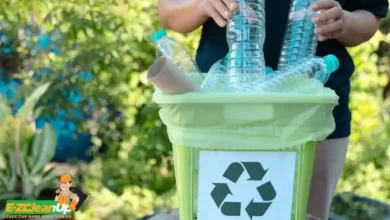Exploring the Lifespan of Tooth Restorations: What to Expect

A person’s general health and well-being depend greatly on having a healthy mouth. With clinically cutting-edge dental procedures and a dentist near you. strive to improve your oral health while giving you a pleasant, satisfying experience.
Introduction to Tooth Restorations
When a tooth is decaying, injured, or missing, “restorative dentistry” refers to the techniques used to preserve its function and appearance. Restorative dentistry includes all dental procedures such as fillings, veneers, crowns, bridges, and dentures. By filling up cavities or replacing missing teeth, the objective is to maintain the natural function and condition of your teeth. A range of restorative dental procedures at our restorative dentistry in Spruce Grove.
Factors Affecting the Lifespan of Tooth Restoration
Fillings often last for 10 years. Dental fillings are known as restorations in medicine, and they often last much longer. In addition to the materials utilized, other elements influencing a filling’s lifespan include:
- Your dietary practices
- Dental care
- Trauma to your teeth
- Deterioration around the filling
- Nighttime teeth grinding
The materials used can give you a decent sense of how long a specific filling should last, even though a number of factors determine how long fillings last.
Lifespan of Different Types of Tooth Restorations
There are four different kinds of fillings; amalgam and composite fillings are the two that are used the most frequently.
Amalgam
For more than 150 years, dentists have been using amalgam fillings. They continue to be the most affordable and possibly the most resilient filler option available. Toxic effects from mercury amalgam fillings could exist. If any of the following apply, you shouldn’t have trusted a mercury amalgam filling: are under the age of six, pregnant, trying to get pregnant, or nursing, have a neurological condition or kidney issues, possess a mercury allergy
Composite
Patients choose composite fillings because the color may frequently be matched to that of the adjacent teeth. They are constructed from a mix of ceramic and acrylic resins.
With the aid of an adhesive, composite fillings chemically adhere to neighboring teeth. They last, on average, for around 7 years. If fillings are tiny and individuals have good oral health, they can last 10 years or more. Composite filling materials can also be utilized to close minor gaps between teeth and repair cracked teeth.
Gold
Gold fillings are far more expensive than amalgam or composite restorations, as you might expect. However, they are also tougher. Gold fillings typically last 20 years or longer.
Ceramic
Ceramic fillings are created from a particular kind of porcelain and can last up to 15 years.
However, they are among the least popular forms of fillings available and are even more expensive than gold restorations. Ceramic fillings must be created by a milling machine or dental lab before being cemented into the tooth.
Glass Ionomer
Glass ionomer fillings can be put right into the tooth and are constructed of a combination of glass and acrylic by your dentist in Spruce Grove. They are often applied to minor cavities close to the gum line rather than chewing surfaces since they are weaker than other fillings. They usually persist for five years.
Signs of Wear and Potential Issues
Your filling might eventually need to be replaced for a number of reasons. It happens most frequently as a result of normal wear and tear. Your filling is put under a lot of pressure as you chew. It might eventually crack, leak, or fall out. The structure may also become contaminated with bacteria and microscopic food particles if it is no longer adequately protecting your tooth. To stop further degradation, the filler needs to be replaced.
It is typical for a composite filling to discolor over time. It may therefore stand out like a sore thumb. To guarantee that it continues to blend in naturally, you can have it replaced by restorative dentistry near you.
Dental fillings can effectively repair tooth decay, but they rarely last a lifetime. Having said that, if you appreciate the benefits of dental filling maintenance and good oral hygiene, you can expand the lifespan of your fillings.
Make your fillings last longer by:
- Fluoride toothpaste can help you brush your teeth two times a day
- Floss each day
- Fewer sticky, sweet snacks
- Use a mouthwash without alcohol to lessen oral bacteria
- Avoid tobacco products.
- Choose water over highly acidic beverages like sodas and juices.
Regular cleanings and exams at the dentist twice a year will keep your fillings and other healthy teeth in fantastic shape.
Book an appointment at Blossom Family Dentistry to get started with your restoration journey! See you soon!





